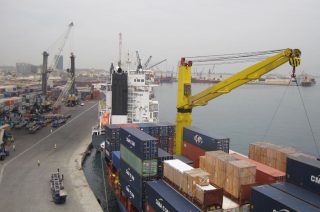“The Vision of the African Union is to become an integrated, prosperous and peaceful Africa, driven by its own citizens and representing a dynamic force in the global arena.”
– African Union Agenda 2063
On 21st March 2018, 44 African leaders, under the auspices of the African Union (AU) took a major step towards long-held aspirations of creating one integrated African market by putting their signatures to an agreement establishing the African Continental Free Trade Area (AfCFTA). This reflects that there is sufficient agreement, between countries at varying levels of development, about liberalising trade in goods to sign a deal and a political will to start work on broader issues of trade liberalisation and regional integration with regards to the free movement of goods, capital, services, and labour.
The agreement is a big deal because an AfCFTA that includes all 55 member states of the Africa Union (currently 44 member states signed), has the potential to boost intra-African trade by 52.3 percent by eliminating import duties, and double this trade if non-tariff barriers are also reduced. And boosting intra-African trade is no small feat, especially considering the starting point where intra-Africa trade only accounts for 18 percent of Africa’s total trading activity – Africa has the lowest levels of intra-continental trade. Now compare this figure to the economies of Europe, Asia and Latin America (which I accept are of somewhat limited comparable value), who are trading within their own regions at rates of approximately 64 percent, 45 percent and 35 percent, respectively.
This also means Africa trades more with others than it does with itself, something that needs to change for the continent to move away from its excessive dependence on raw material exports and value-added imports coming from the EU, China, India and the US. Although intra-African trade levels are low in the global sense, it still presents a huge opportunity in steering Africa towards trading in value-added products as most African countries trade more value-added products among themselves than they do externally. In 2014, manufactured goods accounted for 41.9 percent of intra-African exports, significantly higher than the 14.8 percent share for exports outside the continent.
Nevertheless, Africa will also need to look beyond reducing internal trade barriers to securing a supportive and independent external relationship with its leading trading partners, like the European Union, to ensure the smooth implementation of its regional strategy.
The raw material export and finished product import paradox which sees Africa importing some $35 million in food, despite being home to almost 60 percent of the world’s arable land, is suitable for developed markets like the European Union, who are heavily involved in the value-addition of these raw materials. For example, Africa is home to almost 60 percent of the world’s arable land it imports some $35 million in food, also Ivory Coast and Ghana produce 53 percent of the world’s cocoa, yet the supermarket shelves in Abidjan and Accra, are stacked with chocolates imported from Europe.
Despite the tide showing signs of change with handmade artisanal chocolate brands emerging in both cities, a full gear change towards intra-African trade will result in the diversion and reduction in raw materials to European markets. Even more concerning for the EU is a possible reduction in the export of finished products to African markets, where AfCFTA and the AU’s industrialisation plans seek to move Africa’s trade further up the value chain and seemingly squeeze them out of this space. This is a distinct concern when we look at recent events where European milk producers have been exploiting historically low European milk prices (caused by the lifting of EU milk quotas which coincided with a Russian embargo placed on European food products), to expand into the West African market. Europe will have to readjust to new realities and trading priorities set out by their African counterparts; realities for which the EU has the financial leverage to shape.
Therein lies my second argument, the extent to which the AU is financially dependent on the EU is problematic because it fundamentally restricts the AU’s independence. The AU’s dependence on partner financing gradually increased from 45 percent of the budget in 2010 to over 70 percent towards the end of 2016 with a significant share coming from the EU. Payments by the European Commission increased from €91 million in 2010 to €330 million in 2015 and on the occasion of a recent AU-EU Commission meeting the EU noted that it made available an additional €400 million towards continental and regional projects, including supporting African continental economic integration. This is all within the context of the EU being one of the leading development funders of the continent and thus having extensive leverage when it comes to policy decisions on the continent.
Now, this article is not a foregone conclusion that the AU’s independence is compromised or that the EU is actively undermining Africa’s efforts to industrialise. Rather it is underlining the external factors that can shape the future direction of Africa’s trading relationship with itself and the importance of financial independence when setting out on a path towards making the one integrated and prosperous African market a reality.








